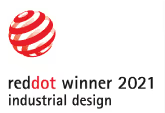Interrogation in innovation
When we hear the word interrogation, most of us picture sitting across from a police detective who’s shining a light bulb in our eyes in an otherwise dark room, as he or she tries to get us to admit to a crime. While that’s a good image for television, it’s only a partial view of what interrogation really is.
The dictionary definition of interrogation is “to elicit useful information.” From that foundational definition of interrogation, we can build a case that it’s a powerful tool for driving innovation. For innovation consultants and designers, it’s positively pivotal during the discovery phase of a project, when we’re in deep analysis mode, trying to uncover market opportunities in a particular industry sector.

When we interrogate from the industrial designer’s perspective, we obsess over details. We turn the spotlight on and question ideas until we’ve verily run out of questions. We ask these questions from every possible angle. We look underneath and look behind an idea, always awaiting that surprise you earn just from pushing your curiosity that extra mile.
To ask the hard questions, and dig deep, and it often involves a lot of “whys.” Think about these questions and how designers working for the companies solved them:
Why is it hard for customers to find what they need in grocery stores? Lowes Foods, a North Carolina grocery chain, has lowered shelf heights so that customers can navigate the entire store without having to read faraway aisle signage.
Why can’t I just share the bill with my friends more easily? Venmo has created an app for people to pay each other back when one person covers the bill with his or her credit card.
Why can’t we wake up to something besides loud noises? The Phillips Wake-up Light does just that, using light to create a less jarring wake-up experience.
In order to be good interrogators—and thus great innovators—we must reject the notion that the way things are is the way things will be. This mentality is cynical and stifling. But it’s easy to believe that systems, products, and services are stuck in their ways. For some though, being curious is part of their nature. To others, curiosity can be seen as a burden and only a distraction, especially when trying to make deadlines. But if you’re like me, curiosity is difficult to silence. If this doesn’t come naturally to you, give it a try and think like a kid; better yet, if you have kids, listen to the questions they ask.
If you never question and never think of the world around you as constantly changing, it’s easy to believe that systems, products, and services are stuck. Arguably, the most valuable asset that creatives have is the ability to see things that others perceive as concrete and fixed as opportunities for changing for the better.
I can imagine questions like “there are all of these cars already on the road, so why can’t every car have the potential to become a taxi” from the founders of Uber, or “with e-commerce working for so many products, why can’t we create an online experience for people who hold prescriptions for eyeglasses” by the people behind Warby Parker.
In order to get better, you must be willing to question—to interrogate—even if everything appears to be going smoothly. In order to go about interrogation in the service of innovation, you must go about it in the freest ways possible:
You have to be willing to be wrong about your ideas (!)
You must have an open mind
You must be able to stand in a different set of shoes—those of humankind itself (and they may be small and uncomfortable or large and insecure)
You must be able to question the status quo (to see fluidity where other see concreteness)
You must question the research (in order to understand its context)
Finally, to create opportunity, you must interrogate. Before there’s even a problem to solve with a new or refined product or service, you have to question and then question some more. Is this the best that we can do? Is this the right tool for the job? Then, let’s float some ideas—it’s a harmless practice that opens the floor, and, potentially, the floodgates.
For all of you inventors and product idea generators, interrogation is the act of being vulnerable—being able to fall out of love with an idea, to scrap often well-laid plans. But ultimately, we know that our overall trajectory is better aligned if we take the time to question where we’re headed.
To see how Trig can implement its practices to improve your product and ensure you're on the right track, reach out to us directly.


